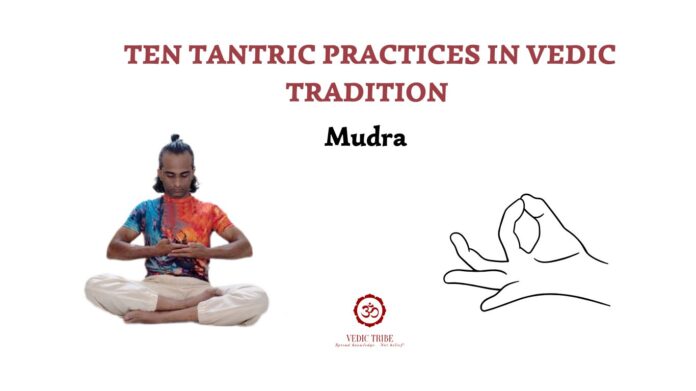Mudra: More Than Just a Hand Pose
In the previous article, we discussed Mantra and in this article we will discuss Mudra.
You’ve likely seen mudras in classical Indian dances like Bharatanatyam and Kathakali. They’re beautiful hand gestures that tell stories. But in Sanskrit and tantric practices, “mudra” means much more than just a dance pose. It translates to “seal” or “instrument for sealing.”
Mudra: A Way to Control Energy
In tantra, mudras are essentially hand gestures used during meditation or worship. These specific gestures are designed to create awareness of the energy flowing within your body. By consciously positioning your hands, you can channel and direct this energy, making your meditation or worship more powerful.
Chin Mudra: This common meditation mudra, where the thumb and index finger touch, helps to enhance focus and concentration.
Anjali Mudra: The prayer position, with palms together, elevates the mind and fosters a sense of reverence during worship.
Mudra Beyond the Hands
It’s important to know that mudras aren’t limited to hand gestures:
Hatha Yoga: Within the practice of Hatha Yoga, mudras extend beyond mere hand gestures, encompassing a broader range of bodily actions designed to manipulate and direct prana, or vital life force. The “Kechari Mudra,” a notable example, illustrates this principle by involving the intricate manipulation of the tongue, which is rolled backward to touch the soft palate or even further into the nasal cavity. This challenging posture is believed to create a seal, preventing the dissipation of vital energy and redirecting it upwards, facilitating a heightened state of consciousness and promoting physical and spiritual well-being. It is a complex process that aims to control the flow of energy within the body by using the body itself as a tool.
Sandhyavandana: Within the Sandhyavandana ritual, a daily practice observed by many followers of Vedic traditions, the performance of 32 distinct mudras alongside the chanting of the Gayatri Mantra serves as a comprehensive act of invoking and channeling divine energies. Each of these hand gestures, carefully prescribed within the scriptures, is not merely a physical movement, but a symbolic representation of specific cosmic principles or deities. By meticulously executing these mudras in conjunction with the sacred syllables of the Gayatri Mantra, the practitioner aims to create a resonant field of spiritual vibrations, thereby purifying the mind, energizing the body, and establishing a profound connection with the divine forces that govern the universe. This elaborate sequence of mudras, therefore, transforms the chanting of the Gayatri Mantra into a multi-sensory experience, deepening the practitioner’s engagement and amplifying the spiritual potency of the ritual.
Mudras are also prevalent in Buddhist iconography: The Bhoomi-Sparsha Mudra, depicting Gautama Buddha’s right hand reaching down to touch the earth, is a profound symbol of his enlightenment. This gesture recalls the pivotal moment when, under the Bodhi tree, Buddha faced temptations and challenges from Mara, the embodiment of illusion. By touching the earth, he called upon it to bear witness to his unwavering resolve and the culmination of his spiritual journey. It signifies his unshakable grounding in truth and his triumph over worldly distractions, marking the instant he attained enlightenment and became the Buddha. Therefore, the mudra is not merely a physical pose, but a powerful representation of his unwavering connection to the earth and his ultimate spiritual awakening, solidifying the earth as a silent yet potent witness to his transformative experience.
Using Mudras in Your Practice
Focus Your Attention: Mudras help you focus your attention during meditation, creating a physical anchor for your mind.
Simple Mudras for Beginners: If you’re new to meditation, start with simple mudras like “Dhyana Mudra” (hands resting in the lap) while meditating. It will help to bring stillness to the body, which will in turn bring stillness to the mind.
For advanced practices: You may learn mudra from experienced teacher of Hatha Yoga and adopt them in your meditative practices.
In Simple Terms:
A mudra is like a physical switch that helps you control and direct your body’s energy. It’s a way to use your hands (or other body parts) to enhance your spiritual practice, making it more focused and powerful. It is a physical action that influences an internal state.
In the next article, we will discuss “Nyasa”
Madhwesh K
Vedic Tribe

